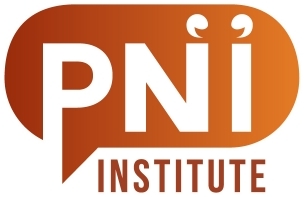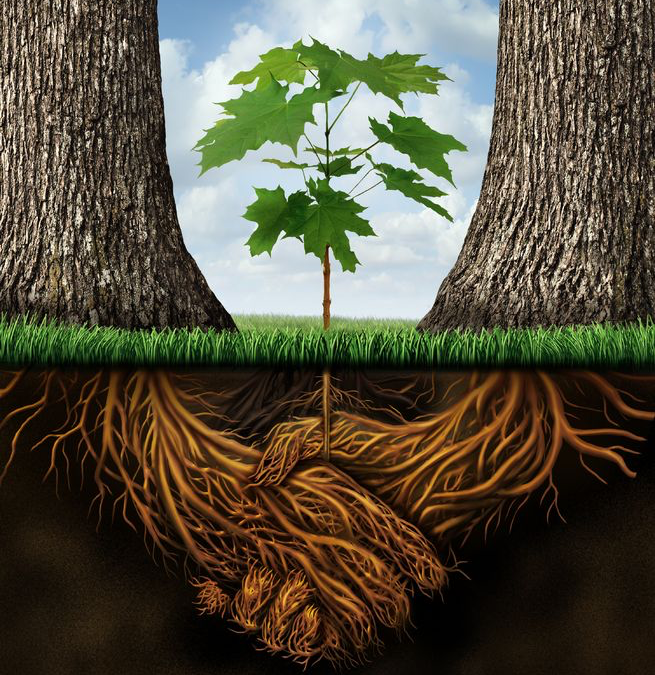On our PNI Institute call on November 14, 2018, we talked about the use of PNI for community building and maintenance.
Tune in to listen to the discussion.
We started the call by talking about a four-stage framework for conversations about communities I started writing up as a blog post but did not finish in time. It was based on what I’ve read about community building and maintenance. My nascent framework developed during our conversation into something much better. It now looks like this:
- I see you, you see me – developing mutual understanding
- We know each other – developing a sense of connection, something shared
- We need each other – developing obligations and resources of mutual support for resilience in crisis
- We work together – developing a sense of collective capacity, a sense of complementary strengths, a sense of coherence and diversity
- Let’s do this – developing shared ambitions and creating effectiveness with the motivation and trust to build new things together
We talked about how participatory narrative inquiry can help people in communities who are at each of these stages maintain their coherence and momentum and move forward into the next stage. As a group exercise, we wrote a series of questions PNI projects might feature at each stage of this framework. Here’s what we came up with (and you can hear us developing this on the recording).
I see you, you see me: Awareness
A PNI project at this stage might collect stories so people can begin to see through each other’s eyes. “Day in the life” in this situation might help to reduce stereotyping and erroneous assumptions about each other. Of course, seeing does not mean agreeing – you can disagree with someone’s opinion while still seeing how their experiences shaped it and what they went through.
Also, sometimes seeing more means seeing beyond the obvious, which sometimes means hiding superficial clues to identity so you can see what lies behind them. For example, we are the same in ways we could not see because we were focused in the differences; or conversely, we have variation we could not see because we lumped people all into the same category. Boundaries play a role in this stage. We remove a boundary between us and create a boundary around us.
PNI questions for the awareness stage:
- What has happened to you in relation to _____ that people don’t know about?
- What has happened that would surprise people?
- What has happened that you can’t tell people in this community about?
- What experience you have had that explains what ____ is really like for you?
- Did you ever have something happen and think, if everybody knew this, they would understand me better? What happened?
We are connected: Connectedness
In this stage people begin to have a sense of community. They need a storehouse of stories to act as connective tissue and collective memory around common themes and concerns. This stage is not about awareness; it’s about relatedness. it’s about building a sense of connectedness that does not depend on agreeing or being the same, but being in the same something – family, town, situation, boat.
PNI Questions for the connectedness stage:
- When was the last time you were surprised by your connection to someone in the community?
- Tell about a time when you felt really connected to this community – or disconnected from it.
- When was the last time you reached out to someone for advice (or someone reached out to you)? What happened?
- Tell about a time when you discovered a connection to someone that either you or they didn’t know about.
- Tell a story about your community that you would tell to someone joining it that they would need to know to be part of it.
We need each other: Resilience
This is a stage of mutual support in times of crisis. Here communities need a storehouse of stories to help when people are in need. People search the stories to find out what to do to get help. This stage is not about needing each other as in dependence or whining or entitlement; it is more about resilience and interdependence, about holding each other up in times of crisis, about coping as a community or society.
PNI Questions for the resilience stage:
- When was the last time you helped someone in this community, or someone helped you? What happened?
- Think of the image of an old-style community fire bucket brigade, of people with a chain of buckets. What experience does that image bring to your mind?
- When you think of our community, and you think of the words “collective” and “resilience”, what experience comes to mind?
We work together: Capacity
In this stage, people develop the knowledge that they can work together, and they develop methods and techniques to work together. To do that, they need to understand their complementarities, their relative strengths and weaknesses and how they fit together. At this point they have a shared perspective, which includes both diversity and coherence. People recognize by now that both are important and both make them more effective. Competition transforms from a destructive force to a friendly rivalry. People feel like a team as well as a community.
PNI Questions for the capacity stage:
- When was the last time you worked together with someone in our community on something and it came out better than either of you could have done alone?
- When was the last time you saw someone trust someone else in our community (or the whole community) enough to take a chance on something?
- Tell me about a time when the diversity in our community was an asset.
Let’s do this: Effectiveness
In this highest stage of community development, collaboration is key. People no longer look to each other and to how they can get along and work together; they look together toward problems they want to solve and solutions they can create. This is the forward-looking, future-oriented stage of community development. This stage depends on all the others. Actually, all of the stages build on the ones before them. You can’t have each layer without the ones beneath it. It’s like the foundation of a building.
PNI Questions for the effectiveness stage:
- Tell me about something our community has accomplished together that could not have been done by us as individuals. How did it happen?
- Could you give me an example of a problem you should have taken to the community instead of trying to solve it on your own? (Or that you did take to the community and are glad you did? Or regret taking to the community?)
- Can you think of a problem that was solved by the community that you were surprised the community could handle?
Someone could use this framework (with further development) to develop a series of projects to develop and assess community awareness, connectedness, resilience, capacity, and effectiveness.
If you would like talk about this nascent and nameless framework (which may or may not develop further), let us know. Thanks to everyone on the call for a stimulating and productive discussion!

